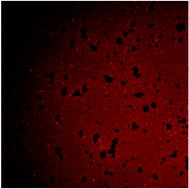Monika Kluzek, Marc Schmutz, Carlos M. Marques and Fabrice Thalmann
Soft Matter, 2018,14, 5800-5810
Cyclodextrins are cyclic oligosaccharides capable of forming inclusion complexes with a variety of molecules, and as such have been recognized as a pharmaceutical and biotechnological asset. Cyclodextrins are known to interact with the components of cell membranes, and this correlates with a significant degree of cytotoxicity.
In this work, we report on the mechanism of degradation of a model dioleoyl-phosphatidylcholine (DOPC) bilayer exposed to a solution with increasing concentrations of α-cyclodextrins. By combining optical fluorescence microscopy and quartz-crystal microbalance experiments, we study the evolution of supported lipid bilayers (SLBs) and giant unilamellar vesicles (GUVs). The rate of lipid removal is found to display a strong nonlinear dependence on the cyclodextrin concentration. A mechanism involving lipid aggregates is proposed.
Soft Matter, 2018,14, 5800-5810

